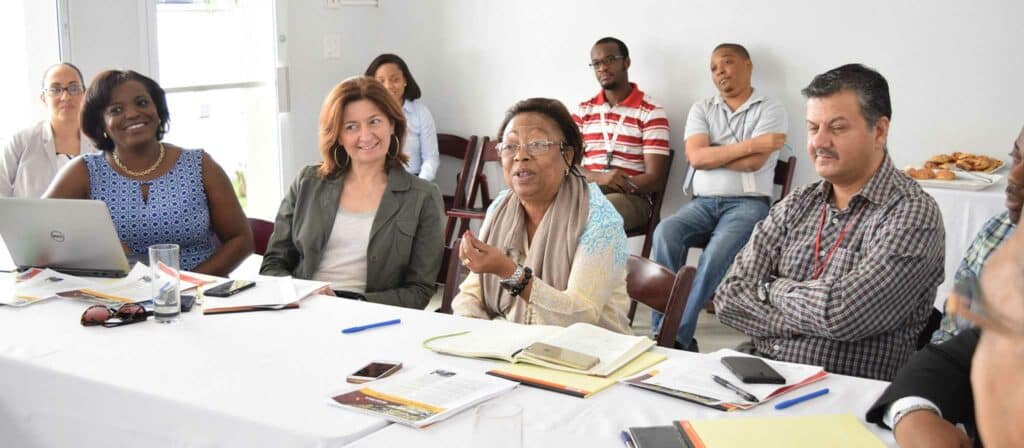Talking through industrial tensions in Haiti
18 May 2017
Port au Prince – Since her appointment on 3 April 2012, Josseline Colimon Fethière, the Special Ombudsman for the garment sector, has committed to seeking and instilling a new climate of relations between the various actors in the garment sector – a climate of harmony and cohesion. One of the main responsibilities of the Special Ombudsman for the sector is to manage tensions and conflicts between employers and workers.

The responsibilities of the Ombudsman are structured around four pillars:
♦ Facilitating social dialogue between employers, workers, government institutions and other partners involved in the Hope Legislation;
♦ Measures to protect the rights of workers;
♦ The development and implementation of programs to improve working conditions in the sector and the strengthening of dialogue between the different parties; and,
♦ Supporting the parties involved in the learning and application of the principles of conflict prevention through consensual dialogue and the use of friendly dispute settlement methods.
During her five years in office (April 2012- April 2017), the Mediator has managed about three hundred interventions (more than fifty on average per year) aiming at improving relations between employers and workers. These various interventions have resulted in the establishment of improved working conditions, a better climate of dialogue in the factories, a better framework for dialogue in general, and the acknowledgment of the importance of peaceful conflict resolution mechanisms. The officer intervenes through telephone conversations, guidance and advice and observation visits to companies. She meets parties at factories or at her office, sometimes separately, sometimes in groups or in whichever way is desired by the parties concerned. From referral to conducting the mediation process, a whole set of tools is used, allowing investigation of the complaints of any party, and to conduct and report on each case.
Any employee or employer can directly solicit her intervention – by telephone call, visit to her office, by e-mail or other means. If a worker belongs to a trade union organization, the trade union is usually representing him or her. When called, the Ombudsman contacts all parties concerned to propose solutions and/or to invite them to a dialogue on the issues at stake. Sometimes she also intervenes based on observations by Better Work, the Ministry of Labour and Social Affairs (MAST) and sometimes also other union or employer representatives.
The Ombudsman often collaborates with MAST, which is the regulating authority for work relations in the sector. Mediation meetings are often held in the presence of either the inspectors of the conciliation office or the MAST Director of Labour. These two entities are regularly informed about the activities of the Ombudsman in the prevention and management of conflicts in factories. The Mediator is recognized as a resource which can help the parties resolve their differences through communication. She fulfils her role based on three orders which define the legitimacy of her role:
♦ Confirmation by its Presidential Decree nominating her based on the HOPE / HELP Act;
♦ Competence through experience and availability;
♦ Legitimacy due to acceptance by the parties of the relevance of her intervention before any other recourse.
The interventions of the Ombudsman in the textile sector are a welcome method of intervening and regulating the industry, a method favouring rapprochement, the emphasis of common grounds and the redefinition of relations between the various actors involved in the process.
